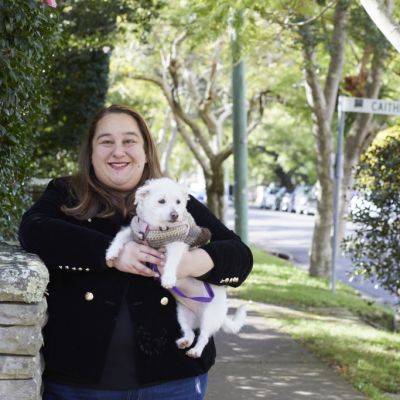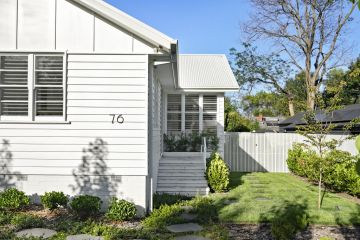Want to rent an apartment? The cities where it could cost you as much as renting a house
The cost of renting a unit in Australia’s three biggest cities has soared by so much that it’s almost the same price as renting a house, new data has revealed.
The latest Domain Rent Report, released last week, shows the gap between renting a house and a unit in Sydney, Melbourne and Brisbane has narrowed by so much that the difference is just $30 a week.
In Sydney, the median weekly asking rent is $750 for a house and $720 for a unit. In Melbourne, it’s $580 for a house and $550 for a unit, and in Brisbane. it’s $630 and $600, respectively.
Across the combined capital markets, the gap is even tighter at $20 a week. The median for a house is $650 a week and for a unit, it’s $630 a week.
Within these major capitals, some suburbs have price gaps as little as $2, and in certain areas, unit prices are even higher than house prices.
Domain chief of research and economics Dr Nicola Powell says it’s not impossible for unit rental prices to one day overtake those of houses.
“There have been points in time when unit rents have been higher than house rents,” Powell says. “The last time that occurred was in June 2018, when unit rents were $10 more expensive than houses. So could the median rent price in units be on par with house prices? Absolutely, I think it could.”
Powell says the past few years have seen demand for apartment living rise, which has consequently driven up rent prices.
“When you wind back to COVID years, we saw record price gaps between renting a house and unit,” she says. “It peaked at a $100 difference because we saw much weaker demand and oversupply of units and a higher demand for houses during that time.
“What we seen now is greater rates of growth for units relative to houses, and that has helped narrow the gap between the two property types.”

Powell says the preference for apartment living, as well as issues with house rents becoming so unaffordable, has driven strong unit price growth in a relatively short period of time.
“It’s not just the younger demographic of renters who are embracing apartment living; it’s the downsizers, those who are living out their golden years,” she says.
“There is the element of affordability and convenience where renters want to be more centrally located to amenities, therefore it is cheaper to rent a unit in these inner or middle-ring suburbs, whereas houses are usually in the middle to the outer ring of the city and are more expensive.”
In Brisbane, the suburb of Kangaroo Point has a median weekly asking rent of $585 a week for a house and $675 a week for a unit – a $90 difference.
Seven Hills has a median of $700 a week for a house abd $750 a week for a unit – a $50 difference.
“The reason why houses are cheaper here is because they’re old, pre-war cottages that are usually either two or three-bedroom properties with one bathroom and no car space,” says Lindsay Brown of Kangaroo Point Residential. “For something like that, we’re looking at prices below that $700 mark.
“But there are also a hell of a lot of units in Kangaroo Point that are priced around that $700 mark as well – and often these are more high-end units.”
Brown says there was a period when there was a shortage of stock but now the market has turned in favour of tenants.

“Six months ago, there was nothing,” he says. “But this week, I saw there were 120 properties for rent in Kangaroo Point. It doesn’t sound low but it’s certainly a long way from zero. Again, it’s the issue of price expectation – everything cheap is flying off the shelf.
“Currently, of those 120 available properties, almost 80 of them are priced above $700 a week. So there’s plenty of stock, but it’s expensive even for units.”
In Melbourne, house and unit rent prices in the suburb of Broadmeadows are on par at $450 each.
In Sydney, Bass Hill units are more expensive than houses, with a median price of $800 a week for a house and $840 a week for a unit – a $40 difference.

In Penrith, it’s just $2 more to rent a house ($530) than a unit ($528); and in Lidcombe, it’s $30 more expensive to rent a house ($750) than a unit ($720).
Feng Zhang of Ray White Lidcombe says the houses in Lidcombe are often run-down with a lower asking price while units offer more modern, low-maintenance living.
However, despite their condition, Zhang says there’s been a surprising demand for houses in the suburb.
“We’ve had a lot of people at our house inspections,” he says. “Despite the condition [of the houses], we’ve had queues outside inspections, so house rentals are very hot at the moment … I don’t know what it is but there are a lot of people looking at house rentals right now.”
Regarding units, Zhang says there are “a lot more people – a lot of young university students – living in units because they like to live in something small, close to shops and close to public transport so it’s easier for them to move around”.

Powell says with rental prices rising, particularly unit rents, this could push tenants to consider purchasing.
“We’ve seen many years now where rents have risen and it becomes challenging when you don’t have that security of a tenant – perhaps they want a shorter lease or can’t afford that rent increase and have to relocate,” she says.
“There are many financial hurdles for a tenant and I think those financial and even emotional aspects of being a tenant have driven many to fast-track their decision to purchase.”
We recommend
We thought you might like
States
Capital Cities
Capital Cities - Rentals
Popular Areas
Allhomes
More
- © 2025, CoStar Group Inc.










